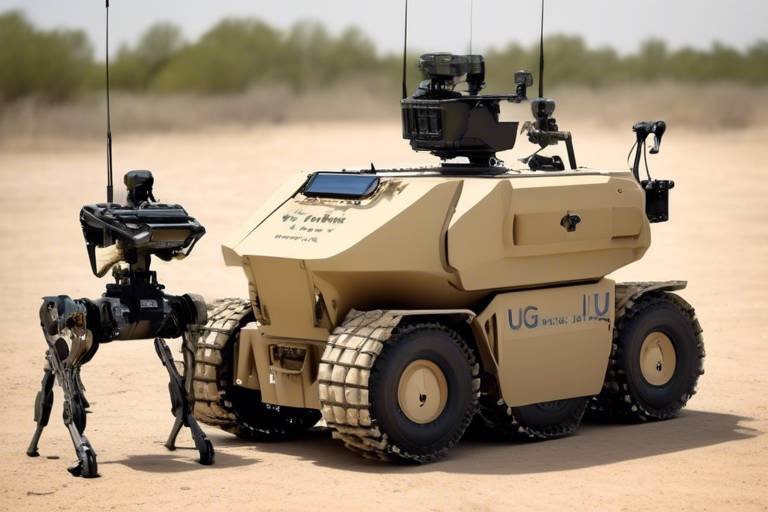The Impact of the RQ-4 Global Hawk on Intelligence Operations
The RQ-4 Global Hawk is not just another drone; it represents a monumental leap in the field of intelligence operations. As the world becomes increasingly complex and interconnected, the need for precise and timely intelligence has never been more critical. The Global Hawk steps into this arena with its high-altitude, long-endurance capabilities, providing military and intelligence communities with a powerful tool to monitor and analyze situations from afar. Imagine being able to gather crucial information without putting any personnel at risk—this is the essence of what the RQ-4 offers.
From its inception, the RQ-4 has been designed with a single mission in mind: to collect vast amounts of data and transform it into actionable intelligence. Its ability to fly at altitudes of up to 60,000 feet allows it to cover large areas while remaining largely undetected. This capability is akin to having a watchful eye in the sky that can see everything without being seen. This article will delve into the various aspects of the Global Hawk, from its technological advancements to its strategic advantages, and even the challenges it faces in the field.
As we explore the intricacies of the RQ-4, it becomes clear that its impact on intelligence operations is profound. It has changed the way military leaders make decisions, offering them real-time insights that were previously unimaginable. The Global Hawk is not just a tool; it's a game-changer that has redefined the landscape of modern warfare and intelligence gathering.
The RQ-4 Global Hawk is an unmanned aerial vehicle (UAV) that has become synonymous with advanced surveillance capabilities. Designed for high-altitude, long-endurance missions, this drone is equipped with cutting-edge technology that allows it to gather intelligence over vast distances. Its operational history spans various military contexts, showcasing its versatility and effectiveness.
With a wingspan of over 130 feet and a maximum takeoff weight of approximately 14,000 pounds, the Global Hawk is a formidable presence in the sky. It is powered by a turbojet engine, enabling it to cruise at speeds of around 350 knots. But what truly sets it apart are its sophisticated sensor systems and data processing capabilities, which we will explore in detail in the following sections.
The RQ-4 Global Hawk is a marvel of modern engineering, boasting a suite of technological advancements that enhance its intelligence-gathering effectiveness. From its sensor systems to its data processing capabilities, the integration of these technologies has revolutionized the way intelligence is collected and analyzed.
At the heart of the RQ-4's capabilities are its advanced sensor systems. These systems allow for real-time data collection, enabling military leaders to make informed decisions based on the latest intelligence. The RQ-4 is equipped with various sensors, including:
- Electro-Optical Sensors: These provide high-resolution imagery for surveillance and reconnaissance missions.
- Infrared Sensors: These detect heat signatures, allowing for night operations and the ability to see through obscurants like smoke or fog.
- Radar Systems: These systems are essential for detecting and tracking targets, providing a comprehensive view of the battlefield.
The electro-optical and infrared sensors onboard the RQ-4 are critical for its imaging capabilities. These sensors work in tandem to provide a detailed view of the ground below, allowing operators to gather intelligence on enemy movements and activities. Whether it's monitoring troop deployments or assessing damage after an airstrike, these sensors play a vital role in modern military operations.
Radar systems on the RQ-4 offer unique advantages, such as the ability to detect and track moving targets even in adverse weather conditions. This capability is invaluable for intelligence operations, as it allows for continuous monitoring of potential threats. The combination of radar and optical sensors creates a comprehensive surveillance platform that can adapt to various operational scenarios.
Efficient data processing is crucial for intelligence operations, and the RQ-4 excels in this area. Its onboard systems are designed to enhance data analysis and dissemination, ensuring that military leaders receive actionable intelligence in real-time. The integration of advanced algorithms and machine learning techniques allows for rapid analysis of vast amounts of data, turning raw information into strategic insights.
The RQ-4 Global Hawk offers several strategic advantages in intelligence operations. One of the most significant benefits is its ability to provide real-time intelligence, which is a game-changer for military operations. Imagine being able to see the battlefield as it unfolds, adjusting strategies on the fly based on the latest information. This capability enhances situational awareness for commanders on the ground, allowing them to make informed decisions quickly.
The ability to provide real-time intelligence is invaluable in today's fast-paced military environment. With the RQ-4, commanders can monitor enemy movements, assess battlefield conditions, and respond to threats with unprecedented speed. This situational awareness is crucial for operational success and can mean the difference between victory and defeat.
When considering the operational cost of the RQ-4 compared to manned aircraft, its cost-effectiveness becomes apparent. The Global Hawk can cover vast areas without the need for onboard pilots, reducing the risks and costs associated with manned missions. This efficiency allows military budgets to stretch further while still maintaining robust intelligence capabilities.
Despite its numerous advantages, the RQ-4 Global Hawk is not without its challenges and limitations. Understanding these factors is essential for maximizing its operational effectiveness. For instance, the drone is vulnerable to various threats, including enemy defenses that can detect and target UAVs.
The RQ-4 is susceptible to anti-aircraft systems and electronic warfare tactics. As adversaries develop more sophisticated means of countering UAVs, the operational effectiveness of the Global Hawk can be compromised. This vulnerability raises important questions about the future of drone warfare and the need for ongoing advancements in countermeasures.
Additionally, certain operational limitations can affect the RQ-4's effectiveness. For example, adverse weather conditions, such as heavy rain or high winds, can hinder its performance. Furthermore, geographical restrictions may limit its operational range, making it challenging to deploy in certain regions.
Looking ahead, the future of intelligence operations will likely be shaped by ongoing advancements in drone technology. The RQ-4 and similar UAVs are poised to play an increasingly prominent role in military strategy and operations. Their integration with other technologies, such as artificial intelligence and machine learning, could revolutionize the way intelligence is gathered and analyzed.
The potential for integrating the RQ-4 with AI and machine learning is exciting. Imagine a scenario where drones can autonomously analyze data and make real-time decisions based on predefined parameters. This capability could lead to even more efficient intelligence operations, allowing military leaders to focus on strategic planning rather than data processing.
The use of the RQ-4 may also influence military doctrine and strategy. As its capabilities evolve, military leaders will need to adapt their approaches to intelligence gathering and warfare. The Global Hawk represents not just a tool, but a paradigm shift in how military operations are conducted in the 21st century.
Q: What is the primary purpose of the RQ-4 Global Hawk?
A: The primary purpose of the RQ-4 Global Hawk is to conduct high-altitude, long-endurance surveillance missions to gather intelligence.
Q: How does the RQ-4 compare to manned aircraft?
A: The RQ-4 is generally more cost-effective than manned aircraft, as it eliminates the need for onboard pilots and can cover vast areas without risking personnel.
Q: What are the main challenges faced by the RQ-4?
A: The RQ-4 faces challenges such as vulnerability to enemy defenses and operational limitations due to weather and geographical restrictions.
Q: How will advancements in technology impact the future of the RQ-4?
A: Advancements in technology, particularly in AI and machine learning, could enhance the RQ-4's capabilities, allowing for more efficient intelligence operations.

Overview of the RQ-4 Global Hawk
This article explores the significant influence of the RQ-4 Global Hawk drone on modern intelligence operations, highlighting its capabilities, advantages, and implications for military and intelligence communities worldwide.
The RQ-4 Global Hawk is a remarkable unmanned aerial vehicle (UAV) that has transformed the landscape of military intelligence. Known for its high-altitude and long-endurance surveillance capabilities, the Global Hawk is a technological marvel that allows military forces to gather crucial intelligence without putting human lives at risk. Designed primarily for reconnaissance missions, this drone has evolved into a critical asset for various military operations around the globe.
With a wingspan of approximately 130.9 feet, the RQ-4 is larger than a traditional manned aircraft, yet it operates at altitudes exceeding 60,000 feet. This altitude not only allows it to remain undetected by most enemy radar systems but also provides it with a vantage point that is unmatched in the field of surveillance. The drone's ability to stay airborne for over 30 hours enables it to cover vast areas, making it an invaluable tool for intelligence gathering.
The operational history of the RQ-4 Global Hawk is as impressive as its specifications. First introduced in the late 1990s, it has been deployed in numerous conflicts, including the wars in Iraq and Afghanistan. Its effectiveness has been evident in various missions, where it has provided real-time intelligence to military commanders, aiding in decision-making processes and enhancing situational awareness on the battlefield.
Here’s a brief overview of some key specifications of the RQ-4 Global Hawk:
| Specification | Details |
|---|---|
| Wingspan | 130.9 feet |
| Altitude | Above 60,000 feet |
| Endurance | Up to 30 hours |
| Speed | Approximately 357 knots (410 mph) |
The RQ-4 Global Hawk is not just a flying camera; it is equipped with sophisticated technology that enables it to perform a variety of missions. Its ability to carry multiple payloads, including high-resolution cameras, synthetic aperture radar, and signals intelligence systems, allows it to adapt to different operational needs. This versatility is one of the reasons why the Global Hawk has become a cornerstone of modern warfare strategies.
In summary, the RQ-4 Global Hawk stands out as a pivotal player in the realm of military intelligence. Its design, specifications, and operational history exemplify how UAV technology has revolutionized the way military forces gather and analyze intelligence. As we delve deeper into the technological advancements and strategic advantages of this drone, it becomes evident that its impact on intelligence operations is profound and far-reaching.
- What missions can the RQ-4 Global Hawk perform? The RQ-4 is primarily used for reconnaissance, surveillance, and intelligence gathering, but it can also support humanitarian missions and disaster response.
- How does the RQ-4 compare to manned aircraft? The RQ-4 offers longer endurance, lower operational costs, and reduced risk to human life compared to traditional manned aircraft.
- What are the key advantages of using drones like the RQ-4? Drones provide real-time intelligence, enhance situational awareness, and can operate in environments that may be too dangerous for manned missions.
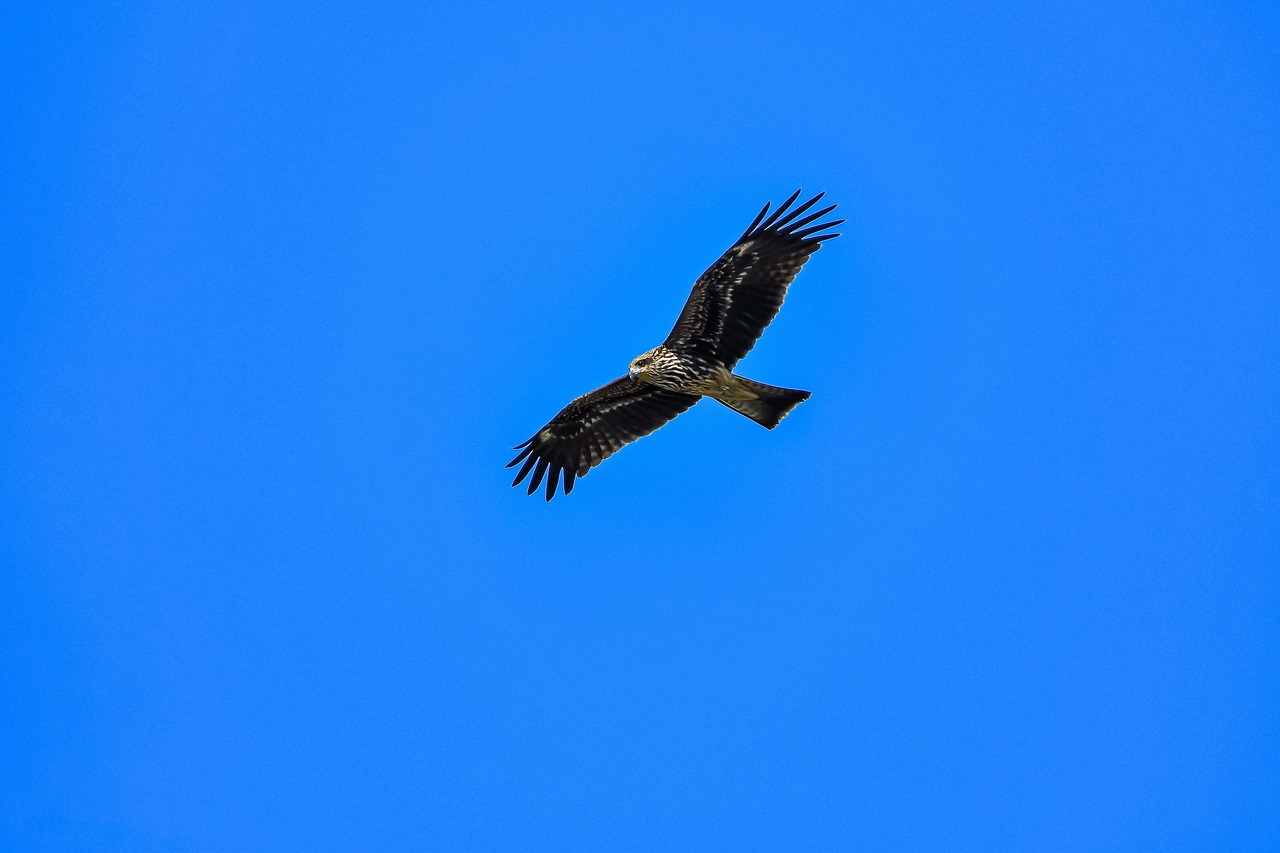
Technological Advancements
The RQ-4 Global Hawk is a testament to the incredible strides made in drone technology, particularly in the realm of intelligence operations. As an unmanned aerial vehicle (UAV), it boasts an impressive suite of advanced technologies that enable it to perform its mission with unparalleled efficiency and effectiveness. From sophisticated sensor systems to robust data processing capabilities, the Global Hawk is engineered to gather and analyze vast amounts of information in real-time, providing military and intelligence communities with a critical edge in modern warfare.
One of the standout features of the RQ-4 is its state-of-the-art sensor systems. These systems are designed to capture high-resolution imagery and data across various spectrums, allowing operators to monitor and assess situations from a safe distance. The integration of these sensors not only enhances the drone's surveillance capabilities but also significantly reduces the risk to human life during reconnaissance missions. Imagine being able to observe enemy movements without putting a single soldier in harm's way—this is the kind of strategic advantage the Global Hawk offers.
Within the realm of sensor technology, the RQ-4 is equipped with a variety of advanced devices that play crucial roles in intelligence operations. The primary types of sensors include electro-optical and infrared sensors, which provide critical imaging capabilities. These sensors allow for detailed visual assessments, even in low-light conditions. For instance, during nighttime operations, the infrared sensors can detect heat signatures that are invisible to the naked eye, making it possible to track movements and gather intelligence without being detected.
Electro-optical sensors are particularly effective for capturing high-definition images, while infrared sensors excel at detecting thermal energy. This combination ensures that the RQ-4 can operate effectively under various conditions. The data collected from these sensors is crucial for creating actionable intelligence that informs military strategy and operational planning. Consider these sensors as the eyes of the Global Hawk, providing a comprehensive view of the battlefield and enabling commanders to make informed decisions.
In addition to optical and infrared sensors, the RQ-4 is outfitted with sophisticated radar systems. These radar capabilities are essential for detecting and tracking targets, even in challenging environments where visibility may be compromised. The radar systems can penetrate through clouds and other obstructions, providing a clear picture of the operational landscape. This technological advantage is invaluable in intelligence operations, where the ability to track enemy movements can mean the difference between success and failure.
While collecting data is vital, the ability to process and analyze that information efficiently is equally important. The RQ-4's onboard systems are designed to handle vast amounts of data, transforming raw information into meaningful intelligence. This capability allows operators to quickly assess situations and respond accordingly, enhancing situational awareness on the ground. Think of it as having a highly skilled analyst on board, continuously sifting through information to provide real-time insights that can shape the course of military operations.
In summary, the technological advancements integrated into the RQ-4 Global Hawk are revolutionizing intelligence operations. From its sophisticated sensor systems to its powerful data processing capabilities, this UAV is redefining how military forces gather and utilize information. As technology continues to evolve, we can only imagine the future enhancements that will further bolster the Global Hawk's already impressive capabilities.
- What is the primary purpose of the RQ-4 Global Hawk?
The RQ-4 Global Hawk is primarily used for high-altitude, long-endurance surveillance and reconnaissance missions, providing real-time intelligence to military commanders. - How does the RQ-4 compare to manned aircraft?
The RQ-4 offers several advantages over manned aircraft, including reduced operational costs, decreased risk to human life, and the ability to gather intelligence in environments that may be too dangerous for pilots. - What types of sensors are used in the RQ-4?
The RQ-4 is equipped with electro-optical, infrared, and radar sensors that allow it to collect a wide range of data for intelligence analysis. - Can the RQ-4 operate in adverse weather conditions?
While the RQ-4 is designed to operate in various weather conditions, extreme weather can still impact its effectiveness. Radar systems help mitigate some of these challenges.

Sensor Systems
The RQ-4 Global Hawk is not just another drone; it’s a sophisticated flying eye, equipped with a suite of advanced sensor systems that elevate its intelligence-gathering capabilities to unprecedented levels. These systems are the backbone of the Global Hawk's operations, allowing it to collect real-time data over vast areas, making it an invaluable asset for military and intelligence agencies around the globe. Imagine having the ability to see everything happening on the ground from miles above, in all weather conditions and at any time of the day. That’s precisely what the Global Hawk offers through its state-of-the-art sensors.
At the heart of its sensor technology are several key components, each designed to perform specific functions that enhance situational awareness. The RQ-4 is equipped with:
- Electro-Optical Sensors: These sensors capture high-resolution images and videos, providing clear visual data for reconnaissance missions.
- Infrared Sensors: Operating in the infrared spectrum, these sensors can detect heat signatures, making them crucial for identifying vehicles, personnel, and other heat-emitting objects even in low visibility conditions.
- Radar Systems: The onboard radar systems are capable of penetrating clouds and adverse weather, allowing for comprehensive surveillance regardless of environmental challenges.
Each of these sensors plays a pivotal role in the overall functionality of the RQ-4. For instance, the electro-optical and infrared sensors work in tandem to provide a full spectrum of imaging capabilities. This combination not only enhances the drone’s ability to conduct surveillance but also aids in target identification and assessment. In a rapidly changing battlefield, having clear and timely information can be the difference between success and failure.
Furthermore, the radar systems integrated into the RQ-4 add another layer of sophistication. These systems can detect and track moving targets, offering military commanders a comprehensive view of the operational landscape. This capability is particularly beneficial in complex environments where traditional visual observation methods may fall short.
In summary, the sensor systems of the RQ-4 Global Hawk are a testament to modern technological advancements in military intelligence. They not only provide critical data but also enhance decision-making processes, allowing military leaders to respond swiftly to emerging threats. As technology continues to evolve, we can expect even more sophisticated sensor capabilities to be integrated into future UAV designs, further transforming the landscape of intelligence operations.
- What types of sensors are used in the RQ-4 Global Hawk? The RQ-4 is equipped with electro-optical, infrared, and radar systems that enhance its surveillance capabilities.
- How does the RQ-4 collect real-time data? The advanced sensor systems onboard allow the RQ-4 to capture and transmit data in real-time, providing critical information to military commanders.
- Can the RQ-4 operate in adverse weather conditions? Yes, the radar systems enable the RQ-4 to perform effectively in various weather conditions, ensuring continuous surveillance.
- What is the significance of the RQ-4's sensor technology? The sensor technology enhances situational awareness, allowing for better decision-making and operational planning in military contexts.
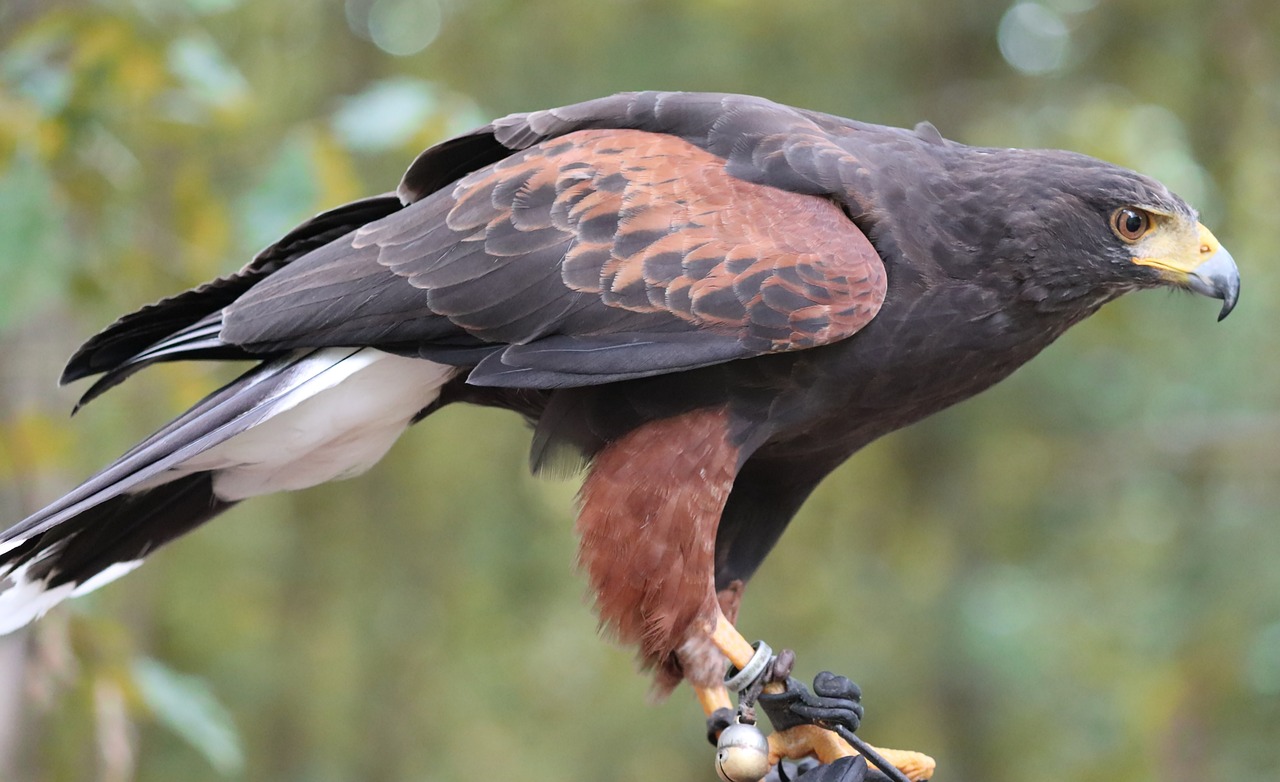
Electro-Optical and Infrared Sensors
The RQ-4 Global Hawk is equipped with state-of-the-art Electro-Optical (EO) and Infrared (IR) sensors, which play a pivotal role in enhancing its surveillance capabilities. These sensors are designed to provide high-resolution imagery and thermal data, allowing operators to monitor vast areas with remarkable detail and accuracy. Imagine being able to see a target clearly from thousands of feet in the air, even in the dead of night—that's the power these sensors bring to the table.
Electro-optical sensors capture images in the visible spectrum, similar to how our eyes perceive the world. This capability is crucial for identifying and tracking objects on the ground, especially in daylight conditions. On the other hand, infrared sensors detect heat emitted by objects, making them invaluable for operations during low-light conditions or in obscured environments, such as smoke or fog. Together, these sensors create a comprehensive surveillance picture, enabling intelligence analysts to make informed decisions.
One of the standout features of the RQ-4's sensor suite is its ability to operate in various environments. Whether it's a bustling urban landscape or a remote desert, the EO and IR sensors adapt to provide critical data. This adaptability is vital for military operations, where conditions can change rapidly. For example, consider a scenario where ground troops need real-time intelligence on enemy movements. The RQ-4 can fly at high altitudes, safely out of range of small arms fire, while still relaying high-definition images and thermal data back to command centers.
Moreover, the integration of these sensors with advanced data processing systems allows for immediate analysis and dissemination of information. This means that military leaders can receive actionable intelligence almost instantaneously, which can be the difference between success and failure in a mission. The ability to track moving targets, assess damage post-strike, and monitor enemy installations in real-time has revolutionized how military operations are conducted.
In summary, the electro-optical and infrared sensors onboard the RQ-4 Global Hawk are not just technological marvels; they are game-changers in the field of intelligence operations. By providing unparalleled visibility and situational awareness, these sensors empower military forces to operate more effectively and safely, ensuring that they stay one step ahead of adversaries. The future of aerial surveillance is undeniably bright, thanks to these remarkable advancements in sensor technology.
- What is the primary function of the RQ-4 Global Hawk?
The primary function of the RQ-4 Global Hawk is to conduct high-altitude, long-endurance surveillance and reconnaissance missions, providing critical intelligence to military commanders.
- How do electro-optical and infrared sensors work?
Electro-optical sensors capture images in the visible light spectrum, while infrared sensors detect heat emitted by objects, allowing for effective surveillance in various conditions.
- What are the advantages of using drones like the RQ-4 over manned aircraft?
Drones like the RQ-4 offer several advantages, including lower operational costs, reduced risk to human life, and the ability to gather intelligence in high-threat environments without putting pilots at risk.
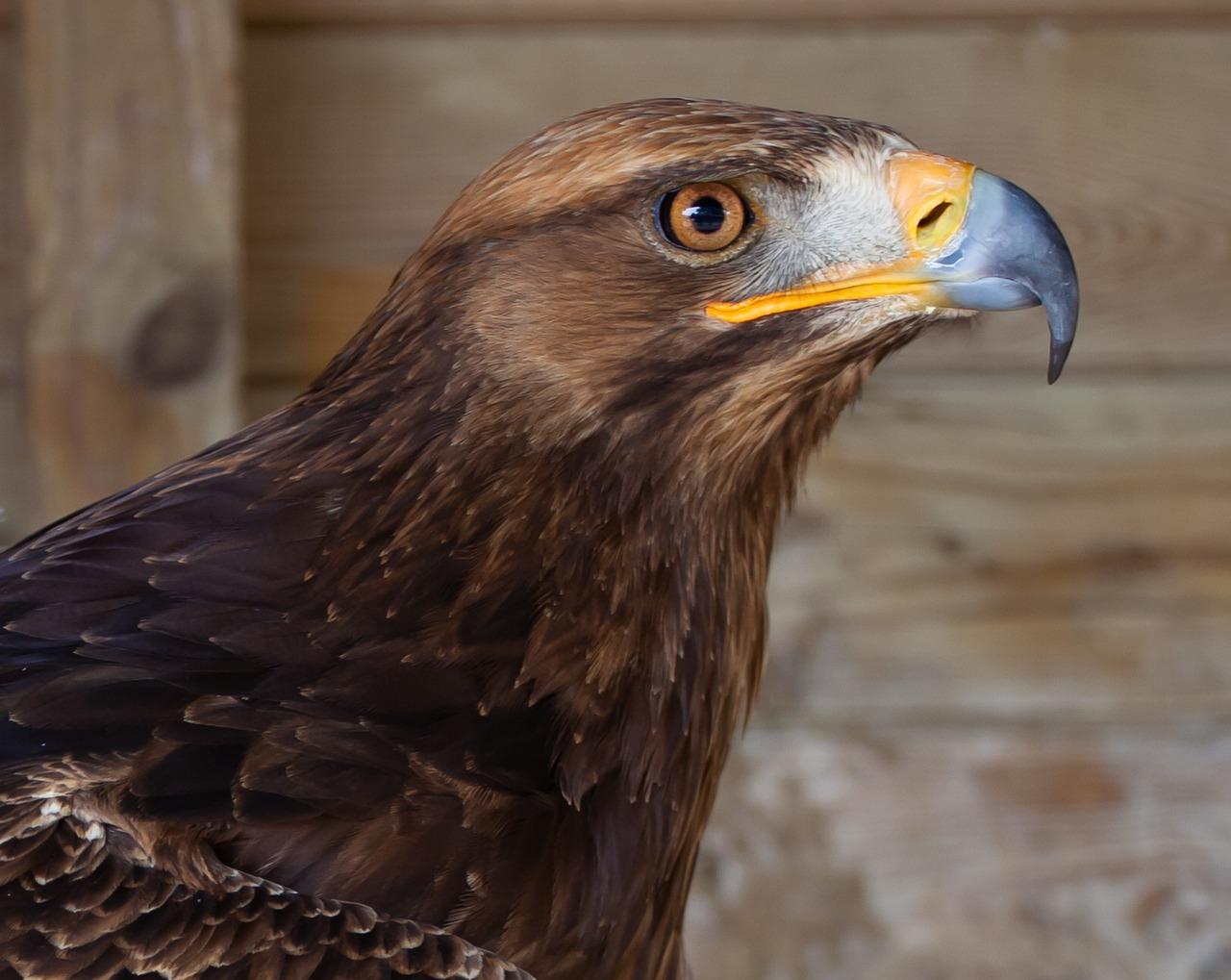
Radar Systems
The radar systems integrated into the RQ-4 Global Hawk are nothing short of revolutionary. These systems are designed to provide unparalleled detection and tracking capabilities, which are crucial for effective intelligence operations. Imagine trying to find a needle in a haystack; the RQ-4's radar acts as a powerful magnet, drawing attention to the most critical targets amidst a sea of information. With its advanced synthetic aperture radar (SAR), the Global Hawk can penetrate cloud cover and operate in various weather conditions, ensuring that no target goes unnoticed.
One of the standout features of the RQ-4's radar systems is their ability to generate high-resolution images of the ground below. This capability allows military analysts to identify and track moving vehicles, monitor troop movements, and even assess the damage in post-strike scenarios. The radar can operate in both strip-map and spotlight modes, providing flexibility to adapt to different mission requirements. In essence, the RQ-4's radar systems transform the way intelligence is gathered, offering a level of detail that was previously unimaginable.
Moreover, the RQ-4's radar systems are not just about detection; they also play a vital role in situational awareness. By continuously scanning the environment, the radar can provide real-time updates to military commanders, allowing them to make informed decisions on the fly. This real-time intelligence is critical, especially in fast-paced combat situations where every second counts. The integration of radar systems with other sensor technologies enhances the overall effectiveness of the RQ-4, making it a formidable asset in the intelligence community.
To illustrate the capabilities of the RQ-4's radar systems, consider the following table that compares its features with traditional manned reconnaissance aircraft:
| Feature | RQ-4 Global Hawk | Manned Reconnaissance Aircraft |
|---|---|---|
| Operational Altitude | Up to 60,000 feet | Typically below 50,000 feet |
| Radar Resolution | High-resolution SAR | Limited resolution |
| Endurance | Up to 34 hours | Limited by crew fatigue |
| Cost of Operation | Lower operational cost | Higher operational cost |
In conclusion, the radar systems of the RQ-4 Global Hawk are a game-changer in the realm of intelligence operations. They not only enhance detection and tracking capabilities but also ensure that military leaders have the situational awareness necessary to make strategic decisions. As technology continues to evolve, we can only imagine the future advancements that will further bolster the effectiveness of these radar systems, leading to even more sophisticated intelligence gathering.
- What is the primary function of the RQ-4 Global Hawk's radar systems? The radar systems are designed to detect and track targets, providing high-resolution images and real-time intelligence for military operations.
- How does the RQ-4's radar perform in adverse weather conditions? The radar can penetrate cloud cover and operate effectively in various weather conditions, ensuring continuous surveillance.
- What advantages does the RQ-4 have over traditional reconnaissance aircraft? The RQ-4 offers higher operational altitude, better radar resolution, longer endurance, and lower operational costs compared to manned aircraft.

Data Processing and Analysis
The RQ-4 Global Hawk is not just a marvel of engineering; it’s a powerhouse of data processing and analysis that transforms raw information into actionable intelligence. Imagine having a bird's-eye view of a battlefield, coupled with the ability to process vast amounts of data in real-time. This drone excels in this realm, equipped with advanced onboard systems that facilitate swift analysis and dissemination of crucial information.
At the heart of the RQ-4's data processing capabilities lies its sophisticated onboard computer systems, which are designed to handle a plethora of data streams simultaneously. These systems can process high-resolution imagery, signals intelligence, and other sensor data, allowing military analysts to make informed decisions rapidly. The integration of artificial intelligence (AI) and machine learning algorithms further enhances its capabilities, enabling the drone to identify patterns and anomalies in the data that human analysts might miss.
One of the standout features of the RQ-4 is its ability to perform near real-time analysis. This means that as the drone collects data from its various sensors, it can immediately process and relay this information back to command centers. For military leaders, this is like having a crystal ball that provides insights into enemy movements and potential threats. The implications for operational planning are profound, as commanders can adjust tactics on the fly based on the latest intelligence.
Moreover, the RQ-4's data processing capabilities are complemented by its robust communication systems. The drone can transmit data via secure links, ensuring that sensitive information reaches the right people without delay. This is critical in high-stakes environments where every second counts. The ability to share intelligence across different platforms and units enhances situational awareness and fosters a more coordinated response to emerging threats.
To illustrate the efficiency of the RQ-4 in data processing, consider the following table that outlines its key processing features:
| Feature | Description |
|---|---|
| Real-Time Data Processing | Processes and analyzes data as it is collected, allowing for immediate decision-making. |
| AI Integration | Utilizes machine learning algorithms to identify patterns and anomalies in data. |
| Secure Communication | Transmits data through secure links to prevent interception and ensure integrity. |
| Multi-Sensor Fusion | Combines data from various sensors for a comprehensive situational analysis. |
In summary, the RQ-4 Global Hawk stands at the forefront of data processing and analysis in modern intelligence operations. Its ability to quickly analyze and disseminate information not only enhances situational awareness but also empowers military leaders to make timely and informed decisions. As technology continues to evolve, the role of the RQ-4 in intelligence operations will likely expand, paving the way for even more sophisticated methods of data analysis and operational planning.
- What are the main advantages of the RQ-4 Global Hawk? The RQ-4 offers high-altitude, long-endurance surveillance capabilities, real-time intelligence processing, and cost-effectiveness compared to manned aircraft.
- How does the RQ-4 process data in real-time? It utilizes advanced onboard computer systems and AI algorithms to analyze data as it is collected, allowing for immediate insights.
- What types of sensors does the RQ-4 use? The RQ-4 is equipped with electro-optical, infrared, and radar sensors, which provide a comprehensive view of the operational environment.
- Can the RQ-4 operate in adverse weather conditions? While the RQ-4 is designed for various environments, extreme weather conditions can limit its operational effectiveness.
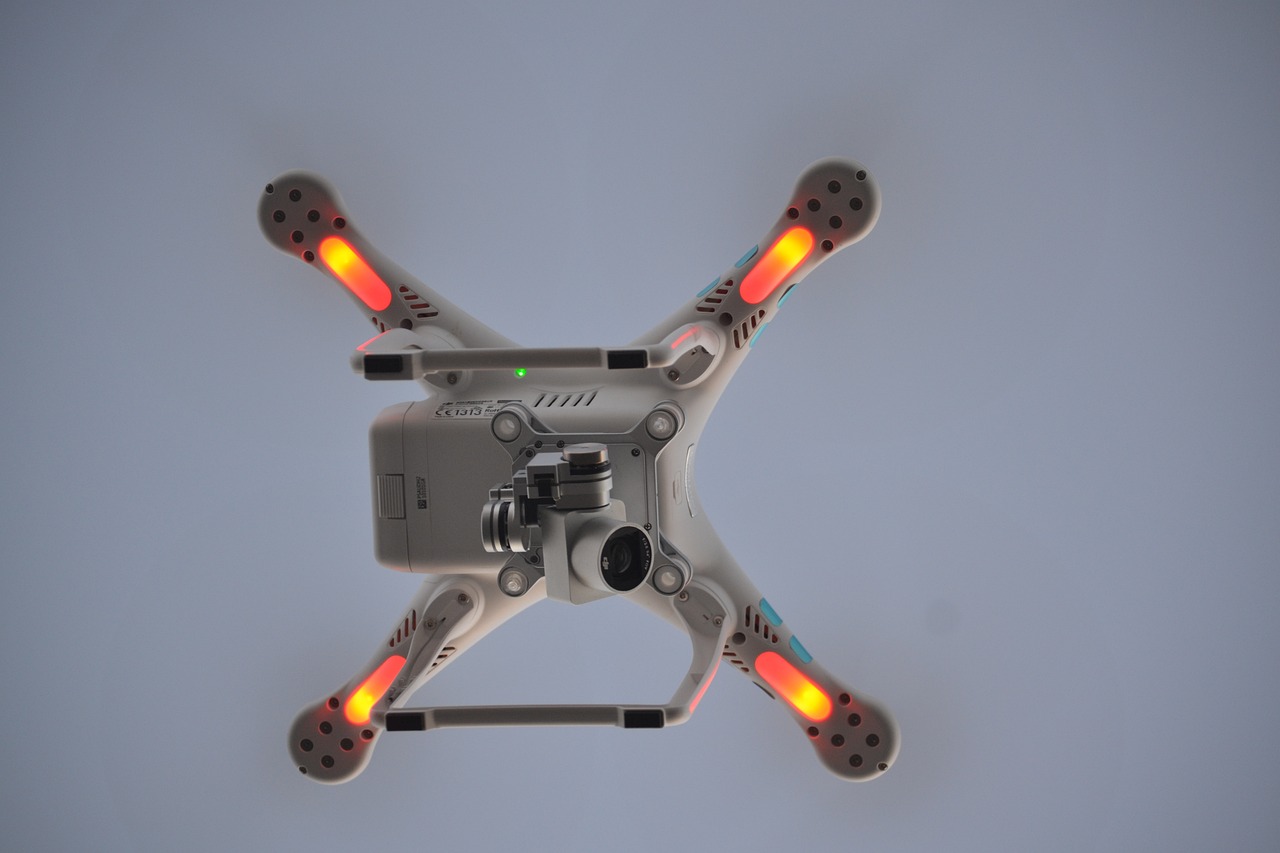
Strategic Advantages
The RQ-4 Global Hawk is not just another drone; it represents a paradigm shift in how military and intelligence operations are conducted. One of its most significant strategic advantages is its ability to provide real-time intelligence. Imagine being a military commander on the ground, making crucial decisions based on the latest information. The Global Hawk offers a bird's-eye view of the battlefield, allowing commanders to respond to threats or opportunities as they arise. This capability is akin to having a crystal ball that reveals the movements of enemy forces, the status of friendly units, and even environmental conditions—all in real-time.
Furthermore, the cost-effectiveness of the RQ-4 cannot be overlooked. When compared to traditional manned aircraft, the operational costs associated with flying a Global Hawk are significantly lower. This is due to several factors, including reduced personnel requirements and lower fuel consumption. For military planners working with tight budgets, this means they can allocate resources more efficiently without compromising on intelligence-gathering capabilities. The table below highlights a comparison of operational costs between the RQ-4 and traditional manned reconnaissance aircraft:
| Type of Aircraft | Operational Cost per Hour | Personnel Required |
|---|---|---|
| RQ-4 Global Hawk | $18,000 | 2 |
| Traditional Manned Aircraft | $30,000 | 5 |
Another strategic advantage of the RQ-4 is its endurance. Unlike manned aircraft that require frequent refueling and crew changes, the Global Hawk can stay airborne for up to 34 hours. This extended flight time allows for prolonged surveillance missions, making it particularly effective in monitoring large areas or tracking moving targets over time. It's like having a hawk that can soar high above its prey, patiently waiting for the perfect moment to strike.
Moreover, the RQ-4's ability to operate at high altitudes means it can evade many surface-to-air threats. This altitude advantage not only keeps the drone safer but also enhances its surveillance capabilities. By flying above the weather and terrain, the Global Hawk can capture clearer and more comprehensive data, making it an essential tool for intelligence operations.
In conclusion, the strategic advantages of the RQ-4 Global Hawk are manifold, from providing real-time intelligence and cost-effectiveness to its endurance and operational safety. These benefits not only enhance military effectiveness but also shape the future of intelligence operations, allowing commanders to make informed decisions faster than ever before.
- What are the primary functions of the RQ-4 Global Hawk?
The RQ-4 is primarily used for surveillance and reconnaissance missions, gathering real-time intelligence to support military operations. - How does the RQ-4 compare to manned aircraft?
The RQ-4 is generally more cost-effective, requires fewer personnel, and has longer endurance compared to traditional manned aircraft. - What types of sensors does the RQ-4 use?
The RQ-4 is equipped with advanced electro-optical, infrared, and radar systems to enhance its intelligence-gathering capabilities.
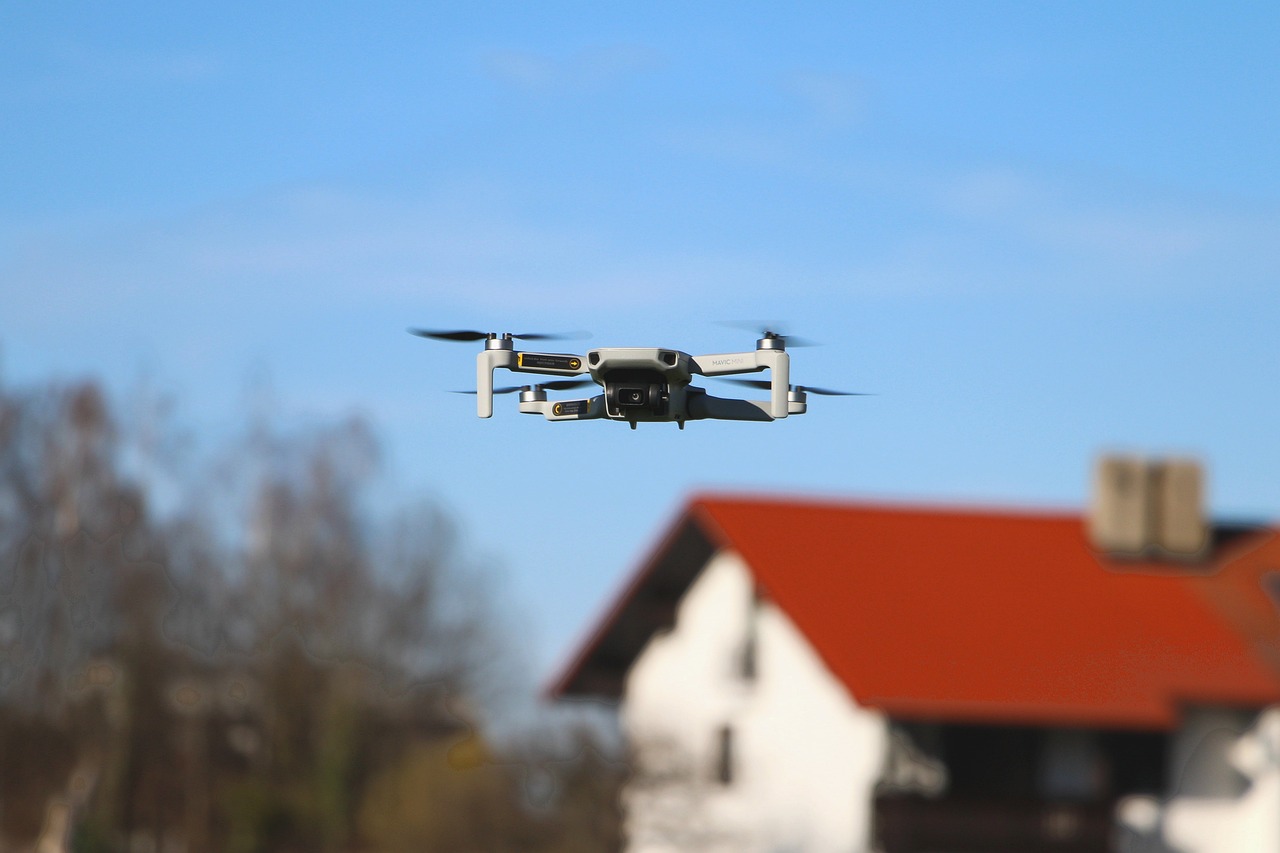
Real-Time Intelligence
The ability to provide is a game-changer in military operations. Imagine being able to see the battlefield as it unfolds, with updates coming in faster than you can blink. This is precisely what the RQ-4 Global Hawk brings to the table. With its high-altitude surveillance capabilities, this drone transforms how military leaders make decisions on the ground. Rather than relying on outdated information that could cost lives, commanders can access live feeds and data, allowing them to respond to situations with unprecedented speed and accuracy.
One of the most significant advantages of real-time intelligence is the enhanced situational awareness it provides. When military personnel on the ground are equipped with the latest information, they can make informed decisions that directly impact the outcome of missions. For instance, if enemy movements are detected, commanders can quickly adjust their strategies, deploy reinforcements, or even call for air support. This dynamic flow of information is vital in modern warfare, where every second counts and the margin for error is razor-thin.
Moreover, the RQ-4's ability to gather real-time data is not limited to just surveillance. It also plays a crucial role in intelligence analysis. The data collected by the drone is processed onboard, allowing for rapid analysis and dissemination to command centers. This means that instead of waiting for hours or even days for intelligence reports, military leaders can receive actionable insights almost immediately. The integration of advanced sensor systems, including electro-optical and infrared sensors, allows the RQ-4 to capture high-resolution images and video that are vital for assessing threats and opportunities.
In addition to enhancing situational awareness, real-time intelligence also fosters improved coordination among various military units. When different branches of the military can share live data, they can operate more cohesively. For example, if ground troops spot enemy activity, they can relay that information to air support units in real-time, ensuring that airstrikes are executed with pinpoint accuracy. This level of coordination not only maximizes the effectiveness of military operations but also minimizes the risk of collateral damage.
In summary, the RQ-4 Global Hawk's capability to deliver real-time intelligence is a revolutionary aspect of modern military operations. It empowers commanders with the information they need to make swift, informed decisions that can turn the tide of battle. As technology continues to evolve, the importance of real-time intelligence will only grow, shaping the future of warfare and intelligence operations.
- What is the RQ-4 Global Hawk?
The RQ-4 Global Hawk is an unmanned aerial vehicle (UAV) designed for high-altitude, long-endurance surveillance missions.
- How does real-time intelligence improve military operations?
Real-time intelligence enhances situational awareness, allowing commanders to make informed decisions quickly and effectively during operations.
- What types of sensors does the RQ-4 use?
The RQ-4 is equipped with advanced electro-optical, infrared, and radar systems that provide critical imaging and tracking capabilities.
- Can the RQ-4 operate in adverse weather conditions?
While the RQ-4 is designed for various operational environments, extreme weather conditions can impact its effectiveness and operational capabilities.

Cost-Effectiveness
The RQ-4 Global Hawk has emerged as a pivotal player in modern military intelligence operations, not just because of its advanced technology, but also due to its impressive . When comparing the operational costs of the RQ-4 to traditional manned aircraft, the differences are striking. Manned missions often involve higher expenses related to fuel, maintenance, and personnel, while the RQ-4, being unmanned, significantly reduces these costs. The operational cost per flight hour for the Global Hawk is estimated to be around $30,000, which, although substantial, is considerably lower than that of a manned reconnaissance aircraft, which can exceed $40,000 per hour.
One of the most compelling aspects of the RQ-4's cost-effectiveness is its ability to cover vast areas without the need for direct human involvement. This not only saves money but also mitigates risks to human life. In many scenarios, deploying a Global Hawk can replace multiple manned missions, thus optimizing resource allocation. For instance, a single RQ-4 can conduct surveillance over regions that would typically require several aircraft, each with its own crew and operational costs.
To illustrate these savings further, consider the following table comparing the costs associated with the RQ-4 and a traditional manned reconnaissance aircraft:
| Criteria | RQ-4 Global Hawk | Manned Reconnaissance Aircraft |
|---|---|---|
| Operational Cost per Hour | $30,000 | $40,000+ |
| Personnel Required | Minimal (Remote Operation) | Multiple Crew Members |
| Risk to Human Life | None | High |
| Surveillance Range | Over 60,000 square miles | Limited by fuel and crew endurance |
Moreover, the RQ-4's ability to operate in diverse environments, from arctic conditions to desert landscapes, without the need for extensive ground support further enhances its cost-effectiveness. The reduced logistical footprint means that fewer resources are needed for deployment, which translates into lower overall costs for military operations.
In summary, the of the RQ-4 Global Hawk is a game-changer in the realm of intelligence operations. By minimizing operational costs while maximizing surveillance capabilities, it allows military leaders to make informed decisions without stretching their budgets thin. This drone not only represents a leap in technology but also a shift in how military resources are allocated and utilized. As we look to the future, the continued evolution of drones like the RQ-4 will likely redefine the economic landscape of military intelligence.
- What is the primary function of the RQ-4 Global Hawk? The RQ-4 Global Hawk is primarily used for high-altitude, long-endurance surveillance and reconnaissance missions.
- How does the cost of operating an RQ-4 compare to manned aircraft? The operational cost per hour for the RQ-4 is generally lower than that of manned reconnaissance aircraft, making it a more cost-effective option.
- What types of sensors does the RQ-4 use? The RQ-4 is equipped with advanced electro-optical, infrared, and radar systems to enhance its intelligence-gathering capabilities.
- Can the RQ-4 operate in adverse weather conditions? While the RQ-4 is designed for versatility, extreme weather conditions can still impact its operational effectiveness.
- What are the future implications of the RQ-4 on military strategy? The integration of the RQ-4 with emerging technologies like AI could significantly reshape military doctrine and operational planning.
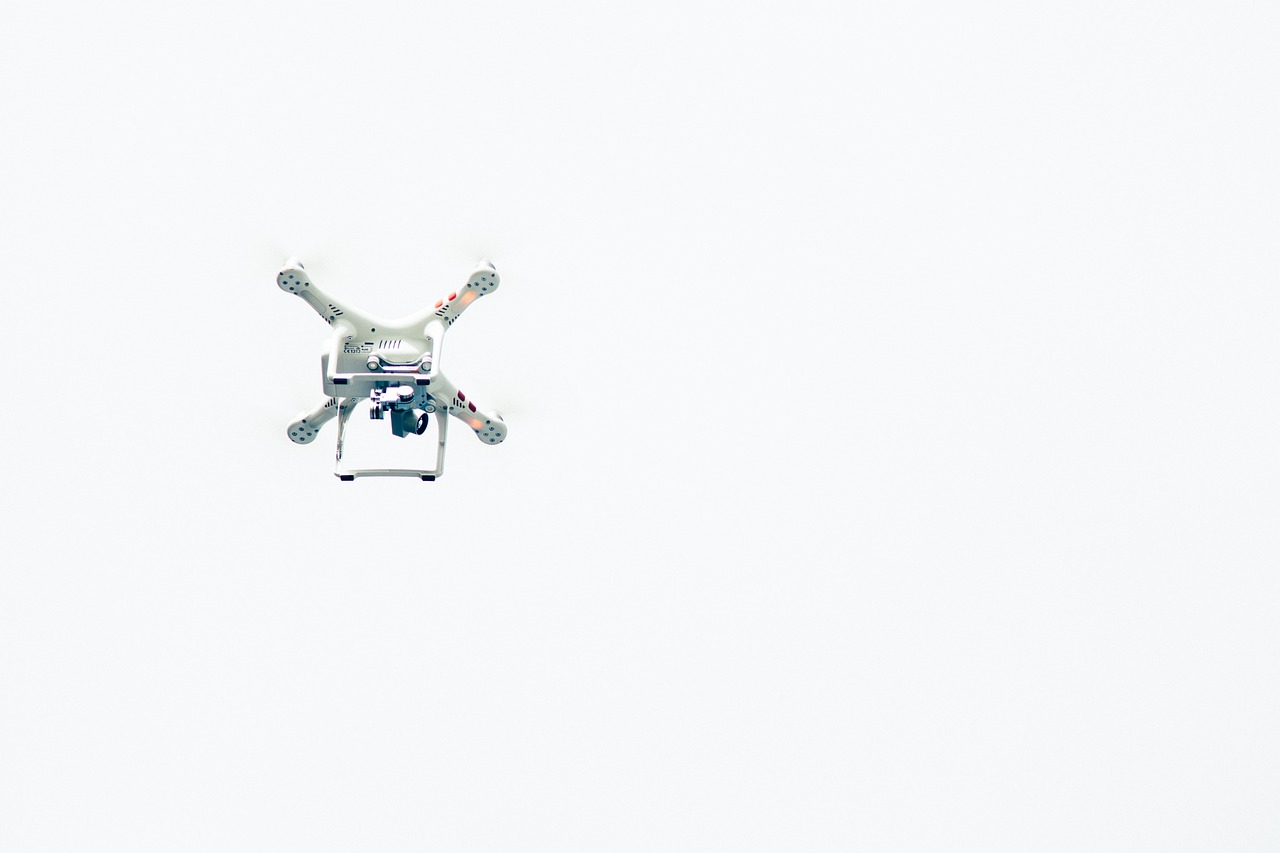
Challenges and Limitations
While the RQ-4 Global Hawk is a powerhouse in the realm of intelligence operations, it's not without its . Understanding these factors is crucial for military strategists and intelligence analysts alike. One of the primary concerns is the vulnerability to threats. Despite its advanced technology, the Global Hawk can be susceptible to enemy defenses, such as radar systems and anti-aircraft missiles. These vulnerabilities can significantly impact its operational effectiveness, especially in contested environments. For instance, if a Global Hawk is deployed in a region with advanced air defense systems, it may require additional support from other military assets to ensure its safety and mission success.
Another challenge lies in the operational limitations imposed by environmental factors. The Global Hawk is designed to fly at high altitudes and cover vast distances, but adverse weather conditions can hinder its performance. For example, heavy rain, strong winds, or fog can severely affect its sensors and overall flight capabilities. In such scenarios, the effectiveness of the intelligence gathered may be compromised, leading to potential gaps in situational awareness for military commanders.
Moreover, the reliance on satellite communication links presents another layer of complexity. While these links allow for real-time data transmission, they can also be disrupted by various factors, including jamming and cyber threats. If communication is interrupted, the Global Hawk may lose its ability to relay critical information back to command centers, which could delay decision-making processes. Thus, ensuring secure and reliable communication channels is paramount for maintaining the operational integrity of the RQ-4.
In addition to these challenges, there are also ethical considerations surrounding the use of drones in military operations. The use of unmanned aerial vehicles raises questions about accountability and the potential for unintended consequences. For instance, the intelligence gathered might lead to military actions that could inadvertently harm civilians or escalate conflicts. As military operations increasingly rely on drones like the Global Hawk, addressing these ethical dilemmas becomes essential.
To summarize, while the RQ-4 Global Hawk is an invaluable asset in modern intelligence operations, it faces significant challenges and limitations that must be acknowledged. From vulnerabilities to threats and operational constraints to ethical concerns, understanding these factors is vital for maximizing the effectiveness of this remarkable UAV.
- What are the primary vulnerabilities of the RQ-4 Global Hawk?
The Global Hawk is vulnerable to enemy radar systems and anti-aircraft missiles, which can threaten its operational effectiveness. - How do weather conditions affect the RQ-4's performance?
Adverse weather conditions such as heavy rain, fog, and strong winds can hinder the RQ-4's sensors and flight capabilities. - What communication challenges does the RQ-4 face?
The reliance on satellite communication links makes the RQ-4 susceptible to jamming and cyber threats, which can disrupt real-time data transmission. - Are there ethical concerns associated with drone operations?
Yes, the use of drones raises ethical questions regarding accountability and the potential for unintended consequences, such as civilian harm.

Vulnerability to Threats
The RQ-4 Global Hawk, despite its impressive capabilities, is not without its vulnerabilities. In the realm of modern warfare, where threats can emerge from the most unexpected places, the Global Hawk must navigate a landscape filled with potential dangers. One of the most significant threats it faces is from advanced enemy air defense systems. These systems can employ a variety of methods to detect and engage UAVs, including radar-guided missiles and electronic warfare tactics. The challenge lies in the fact that while the Global Hawk is designed for high-altitude, long-endurance missions, its altitude can also make it a target for sophisticated surface-to-air missiles (SAMs).
Moreover, the reliance on communication links for data transmission can expose the RQ-4 to cyber threats. Hackers and adversarial nations have increasingly developed capabilities to jam or hijack UAV signals, which could lead to the loss of control over the aircraft or compromise sensitive data. This vulnerability is compounded by the fact that the Global Hawk operates in environments where electronic warfare is prevalent, making it susceptible to various forms of interference.
To illustrate the potential threats faced by the RQ-4 Global Hawk, consider the following table that summarizes some of the key vulnerabilities:
| Type of Threat | Description | Potential Impact |
|---|---|---|
| Advanced Air Defenses | Surface-to-air missile systems capable of targeting high-altitude UAVs. | Loss of the UAV and vital intelligence. |
| Cyber Attacks | Interference with communication links and data transmission. | Loss of control or data breaches. |
| Electronic Warfare | Techniques used to disrupt the UAV's sensors and communication. | Reduced operational effectiveness and situational awareness. |
Additionally, the RQ-4's operational limitations can exacerbate its vulnerabilities. For instance, adverse weather conditions can hinder its performance, making it more susceptible to detection and engagement by enemy forces. Fog, rain, or heavy cloud cover can limit its sensor capabilities, reducing the effectiveness of its surveillance missions. Furthermore, geographical restrictions—such as mountainous terrain or densely populated urban areas—can pose significant challenges, forcing the UAV to fly at lower altitudes where it is more vulnerable to enemy fire.
In conclusion, while the RQ-4 Global Hawk is a formidable asset in the intelligence-gathering arsenal, it is imperative for military strategists to remain aware of its vulnerabilities. By understanding and addressing these threats, they can enhance the operational effectiveness of the Global Hawk and ensure that it continues to provide invaluable intelligence in the face of evolving challenges.
- What are the primary threats to the RQ-4 Global Hawk? The primary threats include advanced air defense systems, cyber attacks, and electronic warfare tactics.
- How does weather affect the RQ-4's performance? Adverse weather conditions can limit the UAV's sensor capabilities and operational effectiveness, making it more vulnerable to detection.
- Can the RQ-4 be hacked or jammed? Yes, the RQ-4 is susceptible to cyber threats that can jam or hijack its communication signals.
- What measures are in place to protect the RQ-4? Various strategies, including enhanced electronic countermeasures and improved operational tactics, are employed to mitigate these vulnerabilities.

Operational Limitations
The RQ-4 Global Hawk, despite its remarkable capabilities, is not without its . Understanding these constraints is crucial for military strategists and intelligence operators who rely on this advanced UAV for critical missions. One of the primary limitations lies in its vulnerability to adverse weather conditions. High winds, heavy rain, or snow can significantly impact the drone's ability to maintain stable flight and collect accurate data. Imagine trying to take a clear photograph during a storm; the same principle applies to the Global Hawk's surveillance operations.
Additionally, the RQ-4 has geographical restrictions that can hinder its effectiveness. For instance, flying over mountainous regions or heavily forested areas can obstruct its sensors and reduce the quality of the intelligence gathered. The terrain can create blind spots, similar to how a lighthouse's beam is obstructed by tall cliffs. This limitation necessitates careful planning and may require the use of additional assets to ensure complete situational awareness.
Another significant challenge is the dependence on satellite communication. The Global Hawk relies heavily on satellite links for data transmission and command-and-control operations. If there is a disruption in satellite connectivity, whether due to technical issues or enemy interference, the drone's operational capabilities can be severely compromised. This is akin to a ship losing its compass; without proper navigation, it can easily stray off course.
Moreover, the RQ-4 is not immune to enemy countermeasures. As adversaries become more adept at electronic warfare, they may employ jamming techniques to disrupt the drone's communication systems. This vulnerability can lead to mission failure or the loss of valuable intelligence. Military planners must account for these risks and develop strategies to mitigate them, ensuring that the Global Hawk remains a reliable asset in the field.
In summary, while the RQ-4 Global Hawk is a cutting-edge tool in modern intelligence operations, its effectiveness is tempered by various operational limitations. Weather challenges, geographical constraints, reliance on satellite communications, and vulnerability to enemy actions are all factors that can impact its performance. Understanding these limitations is essential for maximizing the drone's potential and ensuring successful mission outcomes.
- What are the primary limitations of the RQ-4 Global Hawk?
The RQ-4 faces challenges such as adverse weather conditions, geographical restrictions, dependence on satellite communication, and vulnerability to enemy countermeasures.
- How does weather affect the RQ-4's operations?
High winds, rain, and snow can impact the drone's stability and data collection capabilities, leading to less accurate intelligence.
- What types of terrains can hinder the RQ-4's effectiveness?
Mountains and dense forests can obstruct the drone's sensors, creating blind spots and reducing overall situational awareness.
- How does satellite communication impact the RQ-4?
The RQ-4 relies on satellite links for data transmission and control. Disruptions in this communication can severely limit its operational capabilities.
- What countermeasures can be used against the RQ-4?
Adversaries may use electronic warfare tactics, such as jamming, to disrupt the drone's communications and hinder its effectiveness.

Future of Intelligence Operations
The future of intelligence operations is poised for a seismic shift, primarily driven by the rapid advancements in drone technology. As we stand on the brink of a new era in military strategy, the RQ-4 Global Hawk is not just a tool but a harbinger of what’s to come. Imagine a world where drones seamlessly integrate with artificial intelligence and machine learning, enhancing their operational capabilities beyond our current imagination. This integration could lead to a scenario where drones not only gather data but also analyze it in real-time, providing actionable intelligence instantly. How exciting is that?
As military leaders and strategists look to the horizon, they must consider the implications of these technological advancements. The RQ-4, with its robust surveillance capabilities, will likely become even more pivotal in shaping military doctrine and operational strategies. For instance, the combination of the Global Hawk with AI could allow for autonomous decision-making processes, significantly reducing the time between data collection and actionable insights. This rapid response capability could be crucial in high-stakes environments, where every second counts.
Moreover, the integration of the RQ-4 with other emerging technologies, such as blockchain for secure data transmission and advanced data analytics platforms, could revolutionize how intelligence is gathered and processed. The potential for drones to operate in swarms, communicating and coordinating with each other, presents a fascinating future where intelligence operations become more dynamic and resilient. Envision a landscape where drones work in unison, sharing data with one another to create a comprehensive picture of the battlefield.
However, with great power comes great responsibility. The ethical implications of using drones in intelligence operations will need to be addressed. As capabilities expand, so does the potential for misuse. The military and intelligence communities must navigate this delicate balance, ensuring that advancements do not compromise ethical standards or civilian safety. The future of intelligence operations will not only be about technology but also about how we choose to wield it.
In conclusion, the RQ-4 Global Hawk is set to play a crucial role in the future of intelligence operations. Its integration with cutting-edge technologies could redefine military strategies and enhance situational awareness on an unprecedented scale. As we move forward, the collaboration between human intelligence and technological advancements will be the key to successful military operations, ensuring that we are not just prepared for the challenges of today but also the uncertainties of tomorrow.
- What is the RQ-4 Global Hawk? The RQ-4 Global Hawk is an unmanned aerial vehicle (UAV) designed for high-altitude, long-endurance surveillance missions.
- How does the RQ-4 enhance intelligence operations? The RQ-4 provides real-time intelligence and situational awareness, allowing military leaders to make informed decisions quickly.
- What are the future trends for drone technology in intelligence? Future trends include the integration of AI, machine learning, and blockchain technology to enhance data processing and operational effectiveness.
- What ethical considerations are associated with drone usage? Ethical considerations include ensuring the responsible use of drone technology to prevent misuse and protect civilian lives.
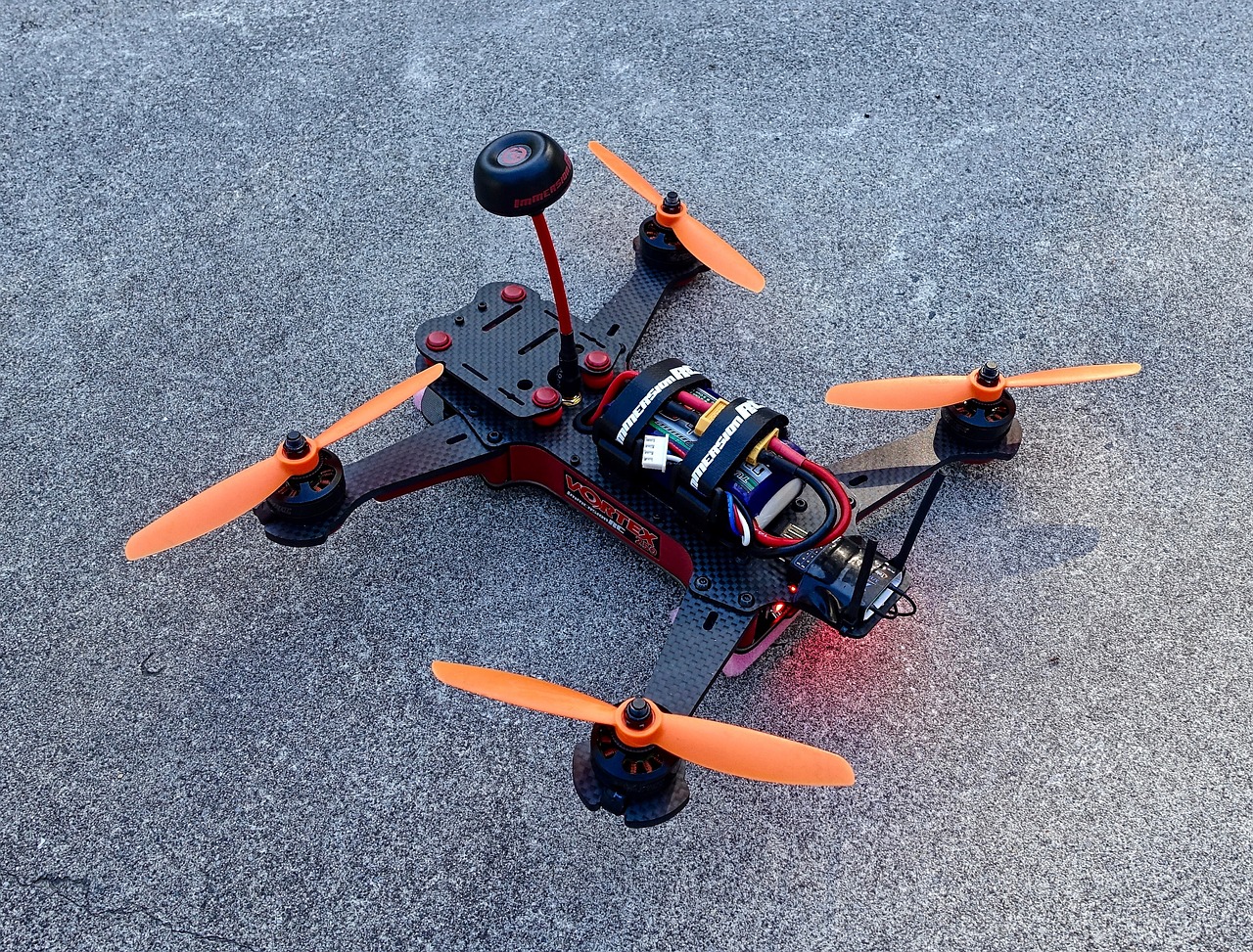
Integration with Other Technologies
The integration of the RQ-4 Global Hawk with other cutting-edge technologies is poised to redefine the landscape of intelligence operations. Imagine a world where drones don’t just fly and gather data, but actively analyze and interpret that information in real-time. This is no longer a distant dream; it’s becoming a reality as advancements in artificial intelligence (AI) and machine learning (ML) are seamlessly woven into the fabric of UAV operations. By incorporating these technologies, the RQ-4 can process vast amounts of data quickly, identifying patterns and anomalies that might escape human analysts.
One significant aspect of this integration is the ability to enhance decision-making processes. With AI algorithms analyzing the data collected by the RQ-4, military commanders can receive actionable intelligence almost instantaneously. This rapid processing capability means that the time between data collection and operational response is drastically reduced, allowing for more agile and informed decision-making on the battlefield. Furthermore, the RQ-4 can be programmed to autonomously adjust its flight path based on real-time data, optimizing its surveillance capabilities without direct human intervention.
Additionally, the RQ-4 can work in tandem with other unmanned systems, creating a network of drones that share information and coordinate their efforts. For instance, while the Global Hawk gathers high-altitude intelligence, smaller drones can be deployed for close-range reconnaissance, feeding back critical data to the RQ-4. This collaborative approach not only enhances situational awareness but also creates a layered defense mechanism, making it harder for adversaries to evade detection.
Moreover, the integration with cloud computing platforms allows for the storage and analysis of data on a scale previously unimaginable. Data collected by the RQ-4 can be uploaded to secure servers where advanced analytics tools can sift through the information, providing insights that can shape military strategies. This synergy between UAVs and cloud technology ensures that intelligence operations are not only efficient but also scalable, accommodating the ever-growing demands of modern warfare.
In conclusion, the integration of the RQ-4 Global Hawk with AI, ML, and cloud technologies is transforming intelligence operations from reactive to proactive. As we look to the future, the potential for these advancements to revolutionize military strategy is immense. The RQ-4 is not just a drone; it is a powerful tool that, when combined with other technologies, can provide unparalleled advantages in the realm of intelligence gathering and operational planning.
- What is the RQ-4 Global Hawk?
The RQ-4 Global Hawk is an unmanned aerial vehicle (UAV) designed for high-altitude, long-endurance surveillance missions. - How does the RQ-4 enhance real-time intelligence?
By integrating advanced sensor systems and AI technology, the RQ-4 can collect and analyze data in real-time, providing immediate insights to military commanders. - What are the strategic advantages of using the RQ-4?
The RQ-4 offers enhanced situational awareness, cost-effectiveness compared to manned aircraft, and the ability to operate in various environments. - What challenges does the RQ-4 face?
Despite its advantages, the RQ-4 is vulnerable to enemy defenses and has operational limitations due to weather and geography. - How will future advancements impact the RQ-4?
Future advancements in drone technology, particularly in AI and machine learning, are expected to further enhance the capabilities of the RQ-4, making it an even more vital asset in military operations.

Impact on Military Doctrine
The advent of the RQ-4 Global Hawk has undeniably transformed the landscape of military doctrine. As military strategies evolve, the integration of advanced unmanned aerial vehicles like the Global Hawk is prompting a reevaluation of traditional tactics. In the past, intelligence gathering relied heavily on manned aircraft and ground-based reconnaissance, often putting human lives at risk. However, the Global Hawk's ability to operate at high altitudes for extended periods allows for a safer, more efficient collection of intelligence data.
One of the most significant impacts of the RQ-4 is its ability to provide real-time intelligence. This capability enables military commanders to make informed decisions swiftly, a crucial factor in modern warfare where the tempo of operations can change in an instant. Imagine a chess game where every move can alter the outcome; the RQ-4 gives commanders the insights they need to anticipate their opponent's moves and adjust their strategies accordingly.
Moreover, the RQ-4's extensive sensor suite enhances situational awareness, allowing military leaders to visualize the battlefield in ways previously unimaginable. As a result, military doctrine is shifting towards a more data-driven approach. Commanders are increasingly relying on the comprehensive data provided by the Global Hawk to inform their strategies, rather than solely depending on historical tactics or intuition.
Another aspect worth noting is the potential for the RQ-4 to influence joint operations. The ability to share real-time data across different branches of the military can lead to more cohesive and coordinated efforts. For instance, ground troops, naval forces, and air support can all operate with a unified understanding of the battlefield, which can significantly enhance operational effectiveness. This shift towards joint operations underscores the importance of interoperability among various military units, paving the way for a more integrated approach to warfare.
However, the integration of the Global Hawk into military doctrine isn't without its challenges. As reliance on drone technology increases, military leaders must grapple with issues such as data security and the ethical implications of surveillance. The balance between utilizing advanced technology for operational success and maintaining ethical standards in warfare is a complex dilemma that military strategists must navigate.
In conclusion, the RQ-4 Global Hawk is not just a tool for surveillance; it is a catalyst for change in military doctrine. Its capabilities are reshaping how military leaders think about intelligence gathering, operational planning, and joint operations. As technology continues to evolve, the military's approach to warfare will undoubtedly adapt, ensuring that the Global Hawk remains a pivotal player on the modern battlefield.
- What is the RQ-4 Global Hawk?
The RQ-4 Global Hawk is an unmanned aerial vehicle (UAV) designed for high-altitude, long-endurance surveillance missions.
- How does the RQ-4 impact military decision-making?
By providing real-time intelligence, the RQ-4 enhances situational awareness, allowing commanders to make informed decisions rapidly.
- What are the ethical implications of using drones like the RQ-4?
The use of drones raises questions about privacy, surveillance, and the potential for misuse of data collected during operations.
- Can the RQ-4 operate in all weather conditions?
While the RQ-4 is designed for high-altitude operations, certain weather conditions can still limit its effectiveness.
Frequently Asked Questions
- What is the RQ-4 Global Hawk?
The RQ-4 Global Hawk is a high-altitude, long-endurance unmanned aerial vehicle (UAV) designed for surveillance and reconnaissance missions. It provides crucial intelligence to military and intelligence communities through its advanced sensor systems and real-time data collection capabilities.
- How does the RQ-4 Global Hawk enhance intelligence operations?
The RQ-4 enhances intelligence operations by delivering real-time data that improves situational awareness for commanders. Its ability to gather and process vast amounts of information quickly allows military leaders to make informed decisions on the battlefield.
- What types of sensors are used in the RQ-4 Global Hawk?
The RQ-4 is equipped with a variety of sensors, including electro-optical and infrared sensors for imaging, as well as sophisticated radar systems for detecting and tracking targets. These sensors work together to provide comprehensive surveillance capabilities.
- What are the strategic advantages of using the RQ-4 Global Hawk?
Some strategic advantages include its ability to provide cost-effective intelligence, enhance decision-making processes, and operate in diverse environments. This UAV allows for prolonged missions without the risk to human pilots, making it a valuable asset in modern warfare.
- What challenges does the RQ-4 Global Hawk face?
Despite its advantages, the RQ-4 faces challenges such as vulnerability to enemy defenses and operational limitations like weather conditions. These factors can impact its effectiveness and operational planning.
- How might the future of intelligence operations be influenced by the RQ-4?
The future of intelligence operations may see increased integration of the RQ-4 with technologies like artificial intelligence and machine learning, potentially revolutionizing how intelligence is gathered and analyzed. This could lead to more efficient and effective military strategies.
- Can the RQ-4 Global Hawk operate in adverse weather conditions?
While the RQ-4 is designed for high-altitude operations, its effectiveness can be limited by adverse weather conditions. Factors such as heavy rain, snow, or strong winds may impact its surveillance capabilities and mission success.
- How does the cost of operating the RQ-4 compare to manned aircraft?
The operational cost of the RQ-4 is generally lower than that of manned aircraft, making it a cost-effective option for intelligence missions. Its ability to fly longer missions without the need for a pilot reduces overall costs associated with personnel and fuel.



